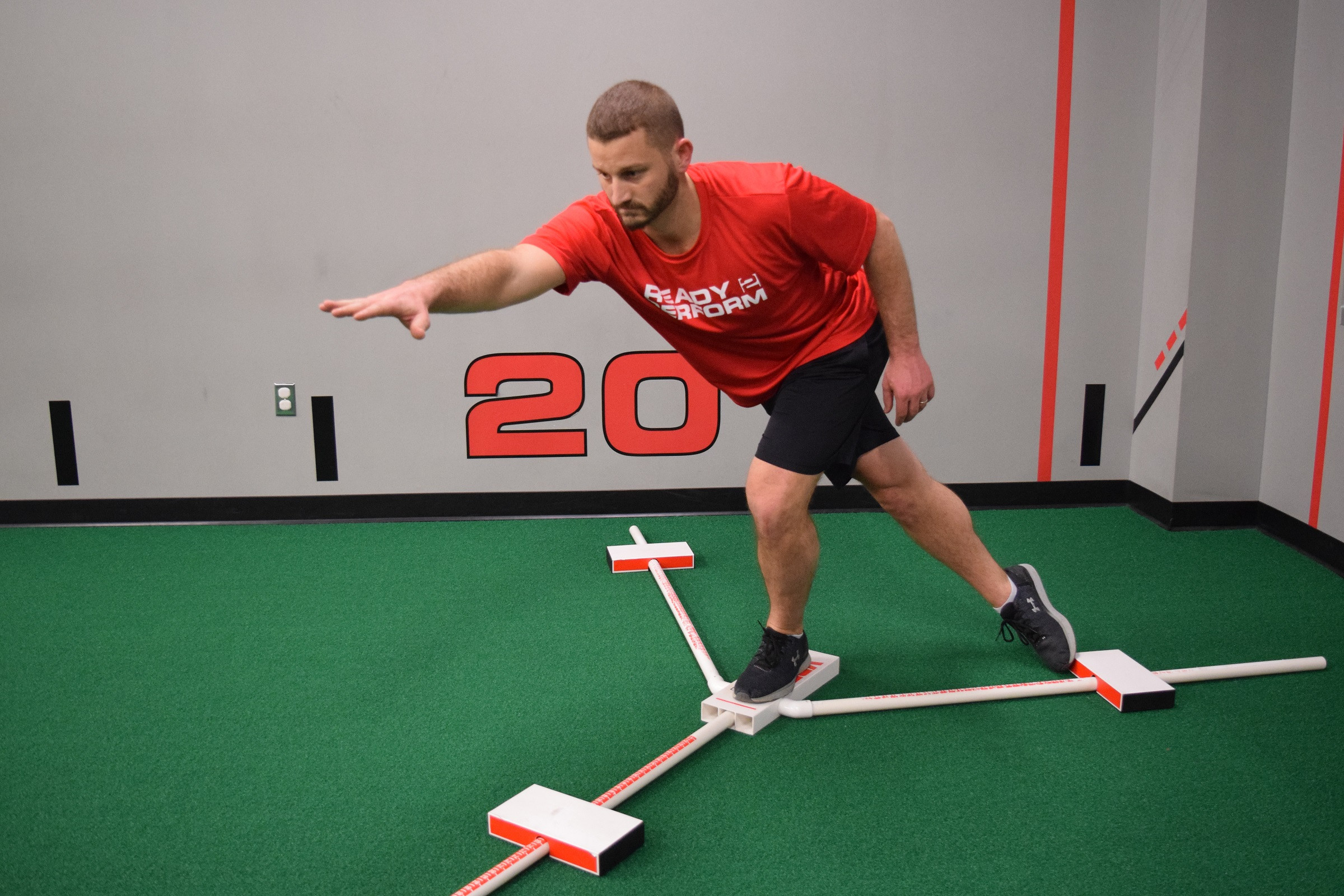Returning to football after ACL surgery requires careful planning and rehabilitation. This guide, brought to you by CAUHOI2025.UK.COM, provides a detailed timeline, essential exercises, and crucial tests to ensure a safe and successful return to the field. Learn about ACL recovery, return to play protocols, and ACL injury prevention strategies.
1. Understanding ACL Injuries and Football
The anterior cruciate ligament (ACL) is a crucial ligament in the knee that provides stability. ACL injuries are common in football due to the sport’s high-impact nature, involving sudden stops, changes in direction, and collisions. According to the American Academy of Orthopaedic Surgeons, approximately 200,000 ACL injuries occur annually in the United States, with a significant percentage among athletes.
1.1. Why ACL Injuries Are Common in Football
Football involves movements that place significant stress on the knee joint. These include:
- Sudden stops and starts: Running at high speeds and abruptly stopping.
- Pivoting and twisting: Changing direction quickly while the foot is planted.
- Direct contact: Collisions with other players.
1.2. The Impact of an ACL Injury on a Football Player
An ACL injury can sideline a football player for an extended period, typically ranging from 6 to 12 months or longer. The injury can impact:
- Physical ability: Reduced strength, agility, and stability.
- Mental well-being: Frustration, anxiety, and fear of re-injury.
- Career prospects: Potential impact on performance and longevity.
2. Initial Post-Surgery Timeline (Weeks 0-4)
The initial weeks after ACL surgery are crucial for setting the foundation for recovery. The primary goals during this period are to reduce pain and swelling, improve range of motion, normalize gait patterns, and initiate blood flow restriction (BFR) training when cleared by your surgeon.
2.1. Pain and Swelling Management
Effective pain management is essential for comfort and facilitating early rehabilitation exercises. Strategies include:
- Medication: Following the prescribed pain medication regimen.
- Ice therapy: Applying ice packs to the knee for 15-20 minutes several times a day.
- Elevation: Keeping the leg elevated to reduce swelling.
2.2. Improving Range of Motion
Regaining full range of motion is vital for returning to football. Exercises include:
- Heel slides: Gently sliding the heel towards the buttocks to increase knee flexion.
- Quad sets: Contracting the quadriceps muscle while keeping the leg straight.
- Gentle stretching: Performing gentle stretches to improve flexibility.
**2.3. Normalizing Gait Pattern
Restoring a normal walking pattern helps prevent compensatory movements that can lead to other issues. Focus on:
- Weight-bearing: Gradually increasing weight-bearing as tolerated.
- Assistive devices: Using crutches or a walker as needed.
- Proper form: Concentrating on a smooth, symmetrical gait.
2.4. Blood Flow Restriction (BFR) Training
BFR training involves using a specialized cuff to partially restrict blood flow during exercise. This can help improve muscle strength and hypertrophy with lower loads. Consult with your surgeon or physical therapist before starting BFR training.
3. Strengthening and Preparing (Weeks 5-12)
During weeks 5 to 12, the focus shifts to initiating a global strengthening program, improving multi-directional locomotive patterns, and beginning pre-running exercises.
**3.1. Global Strengthening Program
A comprehensive strengthening program targets key muscle groups:
- Quadriceps: Leg extensions, squats, and lunges.
- Hamstrings: Hamstring curls, bridges, and Romanian deadlifts.
- Glutes: Glute bridges, hip thrusts, and abductions.
- Calves: Calf raises.
**3.2. Improving Multi-Directional Locomotive Patterns
Football requires athletes to move in various directions with agility. Exercises include:
- Lateral shuffles: Moving sideways while maintaining a low center of gravity.
- Carioca: A crossover stepping pattern.
- Agility ladder drills: Quick footwork drills.
3.3. Pre-Running Preparatory Exercises
Preparing the knee for running involves exercises that mimic running mechanics:
- Walking lunges: Emphasizing proper form and knee alignment.
- Leg swings: Forward and backward, as well as side to side.
- Elliptical training: Low-impact cardio to build endurance.
3.4. Y-Balance Test Practice
The Y-Balance Test assesses dynamic balance and stability. Aim for greater than 95% symmetry between legs. According to a study by the National Institutes of Health, achieving symmetry on the Y-Balance Test is correlated with a reduced risk of lower extremity injuries.
4. Jogging and Plyometrics (Weeks 13-20)
This phase involves starting a jogging program and progressive plyometric exercises, implementing multi-directional movements on turf, and practicing functional hop testing.
**4.1. Beginning Jogging Program
Start with a conservative jogging program, gradually increasing intensity and duration:
- Walk-jog intervals: Alternating between walking and jogging.
- Progression: Gradually increasing the jogging intervals and decreasing the walking intervals.
- Surface: Begin on a soft surface like a track or turf.
**4.2. Progressive Plyometric Activities
Plyometrics help restore explosive power and jumping ability:
- Double-leg hops: Jumping in place on both legs.
- Single-leg hops: Jumping in place on one leg.
- Box jumps: Jumping onto and off a box.
**4.3. Implementing Multi-Directional and Transitional Movements on Turf
Practice football-specific movements on turf to prepare for the demands of the sport:
- Cutting drills: Changing direction at various angles.
- Sprint drills: Short bursts of speed.
- Agility courses: Combining various movements.
**4.4. Functional Hop Testing
Functional hop tests assess the knee’s ability to handle impact and load. Common tests include:
- Single-leg hop for distance: Hopping as far as possible on one leg.
- Triple hop for distance: Hopping three times consecutively on one leg.
- Crossover hop for distance: Hopping across a line as far as possible.
**4.5. Initial Return to Sport (RTS) Testing
Undergo initial RTS testing to evaluate readiness for more intense training. This may include strength, balance, and hop tests.
5. Gradual Participation in Sports-Related Activities (Months 5-9+)
This period focuses on increasing gradual participation in sports-related activities and full performance of RTS testing, aiming for >95% symmetry.
**5.1. Increasing Sports-Related Activity
Slowly reintroduce football-specific drills:
- Passing drills: Practicing throwing and catching.
- Footwork drills: Improving agility and coordination.
- Position-specific drills: Tailored to your role on the team.
**5.2. Full Performance of RTS Testing
Regularly perform RTS testing to track progress and identify any deficits. Aim for greater than 95% symmetry in:
- Y-Balance Test (YBT)
- Hop Tests
- Strength Tests
- Running Tests
**5.3. No Contact Drills
Avoid contact drills until cleared by your surgeon and successful passing of RTS testing:
- Technique drills: Focusing on proper form without contact.
- Strategy sessions: Reviewing plays and game plans.
- Conditioning: Building endurance and fitness.
Research indicates that the reinjury rate decreases by approximately 50% each month from 6 to 9 months post-surgery. After 9 months to 2 years, the reinjury rate plateaus. Patients who pass full RTS testing criteria have an 84% lower reinjury rate, according to the British Journal of Sports Medicine.
 PT2-ZB-1
PT2-ZB-1
Alt: Physical therapist guiding an athlete through blood flow restriction (BFR) training on their leg, enhancing muscle recovery after ACL surgery.
6. Return to Play Criteria
Return to play decisions are multi-factorial and depend heavily on various factors.
**6.1. Demonstrating Appropriate Functional Movement Patterns
Athletes must demonstrate proper movement mechanics without compensatory strategies. This includes:
- Running: Smooth, symmetrical gait.
- Jumping: Controlled landings.
- Cutting: Quick, efficient changes in direction.
**6.2. Ability to Run, Jump, and Change Direction Without Compensatory Strategies
Athletes should be able to perform these activities without limping, favoring one leg, or using other compensatory movements.
**6.3. Sport-Specific Considerations
The demands of the sport play a significant role in return to play decisions. Greater caution may be used for those returning to heavier contact sports such as football, ice hockey, or lacrosse.
**6.4. Return to Play Tests
Several return to play tests are utilized to determine an athlete’s readiness:
- ACL Hop and Stop Test: Assesses the ability to hop and stop quickly on one leg.
- Y-Balance Test: Evaluates dynamic balance and stability.
- Selective Functional Movement Assessment (SFMA): Identifies movement dysfunction.
- Drop Jump Test: Measures landing mechanics and reactive strength.
7. Minimizing Re-Injury Risk
Re-injury is a significant concern after ACL reconstruction. Simple decision rules reduce reinjury risk after ACL reconstruction. The Delaware-OSLO ACL Cohort Study, published in the British Journal of Sports Medicine, highlights the importance of comprehensive RTS testing.
**7.1. Factors That Increase Re-Injury Risk
- Premature return to sport: Returning before fully recovered.
- Inadequate rehabilitation: Not completing a comprehensive rehabilitation program.
- Poor neuromuscular control: Deficits in balance, agility, and coordination.
- Psychological readiness: Fear of re-injury can impact performance and increase risk.
**7.2. Strategies to Reduce Re-Injury Risk
- Comprehensive Rehabilitation: Following a structured rehabilitation program.
- Neuromuscular Training: Improving balance, agility, and coordination.
- Bracing: Using a knee brace for added support.
- Psychological Support: Addressing fear and anxiety through counseling or therapy.
8. The Role of Bracing
Knee braces can provide added stability and support during the return to sport.
**8.1. Types of Braces
- Functional braces: Designed to provide support during activity.
- Prophylactic braces: Worn to prevent injuries.
- Hinged braces: Offer medial and lateral support.
**8.2. Benefits of Bracing
- Increased stability: Provides added support to the knee joint.
- Reduced risk of re-injury: Helps prevent further damage.
- Improved confidence: Can help athletes feel more secure.
9. Psychological Considerations
Returning to football after ACL surgery is not just a physical journey; it’s also a mental one.
**9.1. Addressing Fear and Anxiety
Fear of re-injury is common among athletes returning to sport. Strategies include:
- Counseling: Working with a sports psychologist to address fear and anxiety.
- Gradual exposure: Slowly reintroducing football-specific activities.
- Positive self-talk: Focusing on strengths and progress.
**9.2. Building Confidence
Confidence is essential for performing at your best. Strategies include:
- Setting realistic goals: Achieving small milestones along the way.
- Focusing on progress: Celebrating successes.
- Visualization: Mentally rehearsing successful performance.
10. Expert Opinions and Research
Leading orthopedic surgeons and sports medicine professionals emphasize the importance of individualized rehabilitation programs and comprehensive RTS testing.
**10.1. Recommendations from Experts
- Individualized Rehabilitation: Tailoring the program to the athlete’s specific needs.
- Comprehensive RTS Testing: Using a battery of tests to assess readiness.
- Gradual Return to Sport: Slowly reintroducing football-specific activities.
**10.2. Research Findings
Studies have shown that athletes who complete a comprehensive rehabilitation program and pass RTS testing have a significantly lower risk of re-injury. The British Journal of Sports Medicine has published several studies on this topic, highlighting the importance of evidence-based practice.
11. Finding Support and Resources
Recovering from ACL surgery can be challenging, but there are many resources available to help.
**11.1. Physical Therapists
Physical therapists are essential for guiding athletes through the rehabilitation process. They can:
- Develop individualized rehabilitation programs.
- Monitor progress.
- Provide hands-on treatment.
**11.2. Sports Medicine Physicians
Sports medicine physicians specialize in treating athletes and can provide expert care for ACL injuries. They can:
- Diagnose and treat injuries.
- Coordinate care with other healthcare professionals.
- Provide guidance on return to sport.
11.3. Support Groups
Connecting with others who have experienced ACL injuries can provide valuable support and encouragement. Online forums and local support groups can help athletes share their experiences and learn from others.
12. Preventative Measures
Preventing ACL injuries is crucial, especially for athletes who have already experienced one.
**12.1. Strength Training
Strengthening key muscle groups can help stabilize the knee joint and reduce the risk of injury. Focus on:
- Quadriceps
- Hamstrings
- Glutes
**12.2. Plyometric Training
Plyometric exercises can improve jumping and landing mechanics, reducing stress on the knee joint.
**12.3. Neuromuscular Training
Neuromuscular training can improve balance, agility, and coordination, enhancing overall stability.
**12.4. Proper Technique
Using proper technique during sports activities can reduce the risk of injury. This includes:
- Landing softly
- Maintaining good posture
- Avoiding sudden movements
13. Long-Term Outlook
While returning to football after ACL surgery can be challenging, many athletes successfully return to their pre-injury level of performance.
**13.1. Potential Challenges
- Re-injury
- Chronic pain
- Osteoarthritis
**13.2. Strategies for Long-Term Success
- Continuing to follow a strength and conditioning program
- Monitoring knee health
- Seeking prompt treatment for any new injuries
14. Frequently Asked Questions (FAQ)
14.1. How long does it take to recover from ACL surgery?
Recovery typically takes 6-12 months, but it varies based on individual factors.
14.2. Can I return to football after ACL surgery?
Yes, with proper rehabilitation and clearance from your surgeon and physical therapist.
14.3. What exercises should I avoid after ACL surgery?
Avoid high-impact activities and exercises that cause pain or swelling.
14.4. Is bracing necessary after ACL surgery?
Bracing can provide added support and confidence, but it’s not always necessary.
14.5. How can I prevent re-injury after ACL surgery?
Follow a comprehensive rehabilitation program, maintain strength and conditioning, and use proper technique.
14.6. What is the role of physical therapy in ACL recovery?
Physical therapy is crucial for restoring strength, range of motion, and function.
14.7. What are the key return-to-sport tests after ACL surgery?
Key tests include the ACL Hop and Stop Test, Y-Balance Test, SFMA, and Drop Jump Test.
14.8. How important is psychological readiness for return to sport after ACL surgery?
Psychological readiness is very important; fear of re-injury can impact performance and increase risk.
14.9. What should I do if I experience pain or swelling during rehabilitation?
Stop the activity and consult with your physical therapist or surgeon.
14.10. Are there any long-term complications associated with ACL surgery?
Potential long-term complications include re-injury, chronic pain, and osteoarthritis.
15. CAUHOI2025.UK.COM: Your Partner in Recovery
At CAUHOI2025.UK.COM, we understand the challenges athletes face when recovering from ACL injuries. Our goal is to provide accurate, reliable, and easy-to-understand information to help you make informed decisions about your health and recovery.
We encourage you to explore our website for more articles, resources, and expert advice. Whether you’re looking for detailed rehabilitation protocols, tips on preventing re-injury, or guidance on psychological readiness, CAUHOI2025.UK.COM is here to support you every step of the way.
Need more personalized guidance? Contact us today to connect with our network of experienced healthcare professionals.
- Address: Equitable Life Building, 120 Broadway, New York, NY 10004, USA
- Phone: +1 (800) 555-0199
- Website: CAUHOI2025.UK.COM
Don’t let an ACL injury sideline you for good. With the right information, support, and dedication, you can return to the field stronger than ever. Visit CAUHOI2025.UK.COM and start your journey back to football today. Find reliable answers, practical solutions, and expert advice – all in one place. Explore CauHoi2025.UK.COM to discover comprehensive ACL recovery guides, return to play protocols, and ACL injury prevention strategies.

